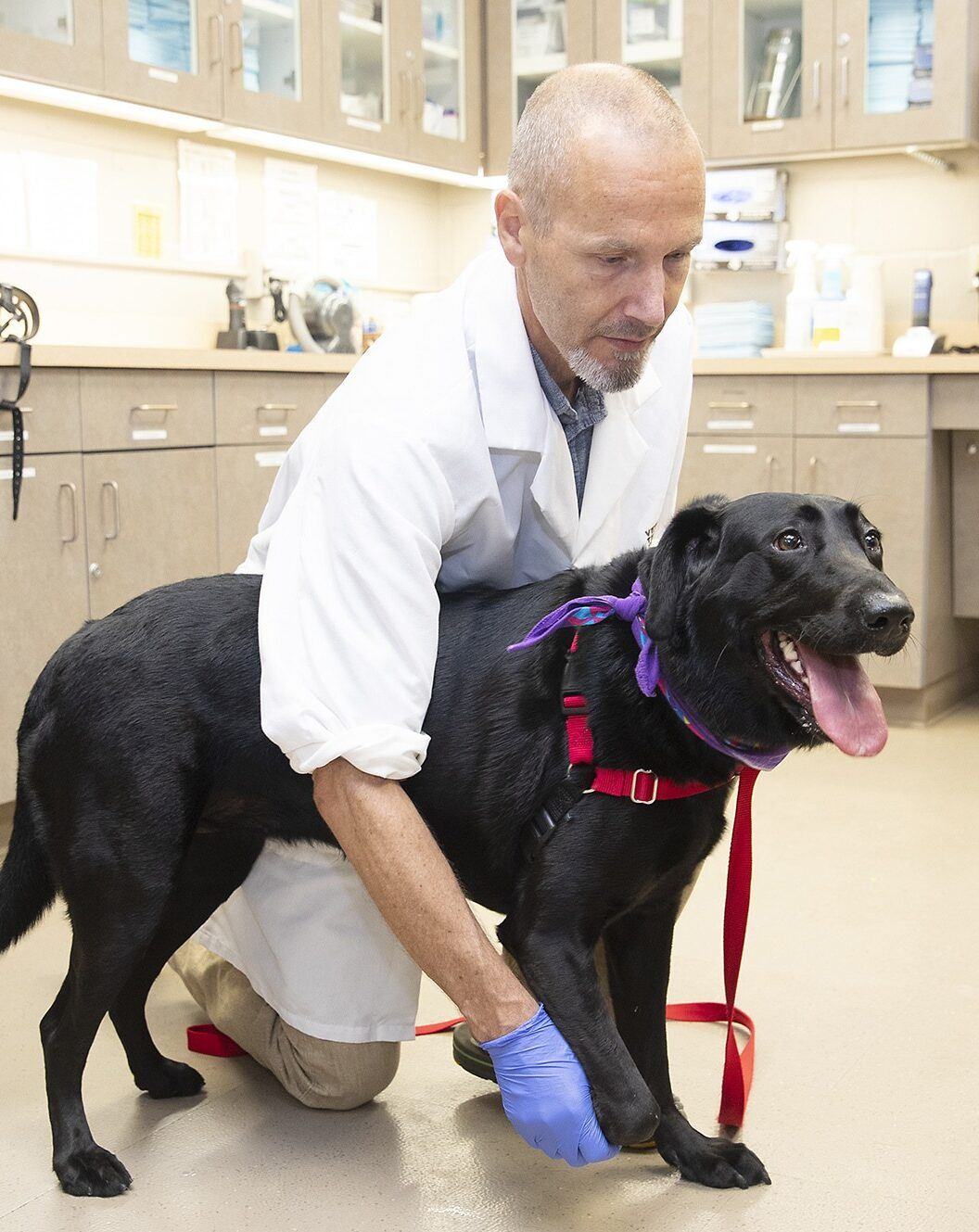Dogs With Meningiomas Live Longer With Radiation Therapy Than Surgery, Texas A&M Researchers Find
Study of 285 cases shows radiation nearly doubles average survival time in dogs with brain tumors.
Researchers at the Texas A&M College of Veterinary Medicine and Biomedical Sciences (VMBS) have discovered that dogs with meningiomas — the most common type of brain tumor in dogs — live longer if they receive radiation therapy rather than surgery.

With collaborators at clinics in the United States, United Kingdom and Japan, the researchers compared the treatment records of 285 pet dogs with meningiomas and found that the average post-treatment survival rate for radiation therapy was just under two years, while surgery had an average of about 10 months.
“Whether to perform surgery or radiation for this type of cancer in dogs has been a big question for a number of years,” said Dr. Nick Jeffery, a professor of neurology in the VMBS’ Department of Small Animal Clinical Sciences. “It’s too expensive for most dog owners to do both treatments, so knowing which to recommend as the veterinarian is crucial for the patient’s survival and well-being.”
Understanding Canine Meningiomas
Meningiomas are brain tumors that grow out of the membrane lining the inside of the skull and eventually press on the brain. Symptoms vary depending on where the tumors appear, but one common sign in dogs is seizures.
“Other symptoms include walking in circles, changing behavior and having a lack of coordination with their legs,” Jeffery said. “Meningiomas are also more common in older dogs, especially in breeds like German shepherds, golden retrievers and boxers.”
While radiation treatment for meningiomas can entail several trips to a specialty clinic, most dogs are only minimally affected by the procedure and show few symptoms after treatment.
“Radiation therapy is very targeted toward the part of the brain affected by the tumor, so it tends to be applied in a small area,” Jeffery said. “This typically leads to a more complete removal of the tumor as well as fewer complications later on. For example, there is a post-operative risk for pneumonia that comes with brain surgery in dogs, and radiation avoids that risk.”
Thankfully, most dogs with meningiomas have a good prognosis.
“Their life expectancy is pretty good compared to other kinds of tumors,” Jeffery said.
Putting New Research Techniques To Work
This discovery, recently published in the Journal of Veterinary Internal Medicine, was made possible through application of a statistical technique called inverse-probability weighting estimation that allowed Jeffery and his colleagues to compare clinical cases.
“The ideal method to compare outcomes between different treatments is a randomized controlled trial,” Jeffery said. “But there are many practical obstacles — largely to do with high costs — to doing such a trial for this disease in dogs.
“The statistical method means we can analyze pre-existing data and take into account various other factors that might influence treatment choices and outcomes to provide a summary comparison of survival after treatment,” he said.
